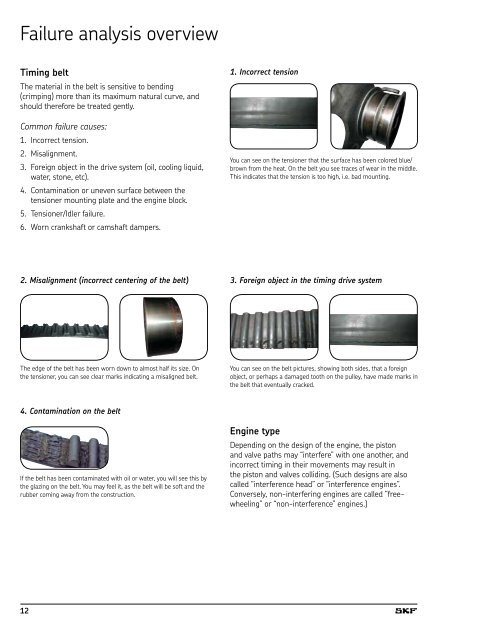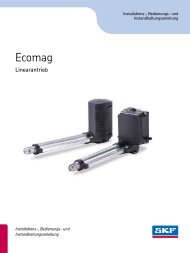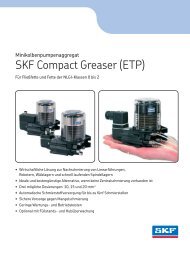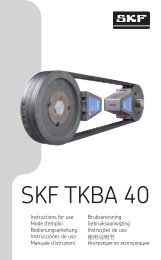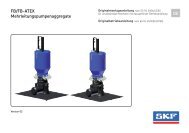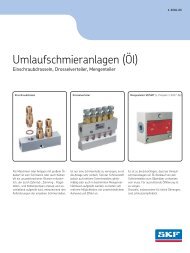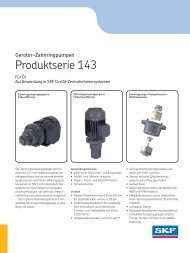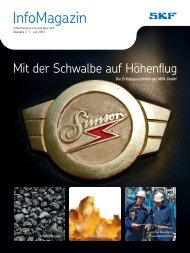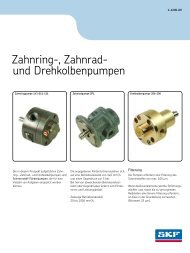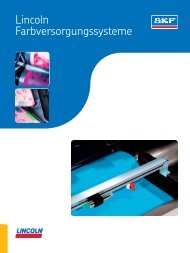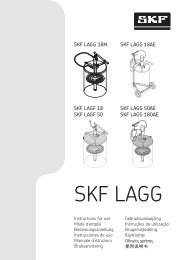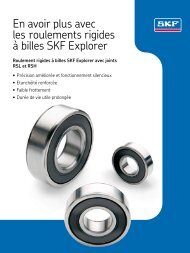SKF Timing Belt Kits - SKF.com
SKF Timing Belt Kits - SKF.com
SKF Timing Belt Kits - SKF.com
Create successful ePaper yourself
Turn your PDF publications into a flip-book with our unique Google optimized e-Paper software.
Failure analysis overview<br />
<strong>Timing</strong> belt<br />
The material in the belt is sensitive to bending<br />
(crimping) more than its maximum natural curve, and<br />
should therefore be treated gently.<br />
Common failure causes:<br />
1. Incorrect tension.<br />
2. Misalignment.<br />
3. Foreign object in the drive system (oil, cooling liquid,<br />
water, stone, etc).<br />
4. Contamination or uneven surface between the<br />
tensioner mounting plate and the engine block.<br />
5. Tensioner/Idler failure.<br />
6. Worn crankshaft or camshaft dampers.<br />
2. Misalignment (incorrect centering of the belt)<br />
The edge of the belt has been worn down to almost half its size. On<br />
the tensioner, you can see clear marks indicating a misaligned belt.<br />
4. Contamination on the belt<br />
If the belt has been contaminated with oil or water, you will see this by<br />
the glazing on the belt. You may feel it, as the belt will be soft and the<br />
rubber <strong>com</strong>ing away from the construction.<br />
12<br />
1. Incorrect tension<br />
You can see on the tensioner that the surface has been colored blue/<br />
brown from the heat. On the belt you see traces of wear in the middle.<br />
This indicates that the tension is too high, i.e. bad mounting.<br />
3. Foreign object in the timing drive system<br />
You can see on the belt pictures, showing both sides, that a foreign<br />
object, or perhaps a damaged tooth on the pulley, have made marks in<br />
the belt that eventually cracked.<br />
Engine type<br />
Depending on the design of the engine, the piston<br />
and valve paths may “interfere” with one another, and<br />
incorrect timing in their movements may result in<br />
the piston and valves colliding. (Such designs are also<br />
called “interference head” or “interference engines”.<br />
Conversely, non-interfering engines are called “freewheeling”<br />
or “non-interference” engines.)


